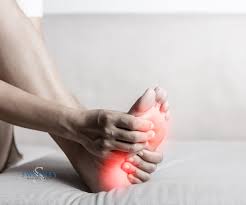Gout is a type of arthritis that can cause sudden and intense pain, swelling, and redness in the joints, often in the big toe. While the painful episodes, known as gout attacks, seem to emerge out of nowhere, they are generally rooted in specific underlying causes. Learning about how gout occurs and exploring ways to manage or prevent it can lead to significant relief.
What is Gout?
Gout is a form of inflammatory arthritis that results from an excess uric acid buildup in the bloodstream. Uric acid is a substance that forms when the body breaks down purines, which are compounds found in certain foods and beverages like red meat, seafood, and alcohol. Usually, uric acid dissolves in the blood and is eliminated through the kidneys. When the body produces too much uric acid or cannot expel enough, the substance can crystallize and deposit in the joints. These sharp, needle-like crystals lead to the intense discomfort associated with gout.
The condition is most common in middle-aged adults and tends to occur more in men than women. For many, gout can act as a chronic condition, cycling between periods of remission and flare-ups.
What Causes Gout Attacks?
Gout attacks occur when uric acid crystals in the joints initiate inflammation. While everyone’s triggers may differ, certain factors significantly increase the likelihood of an attack. High-purine foods like shellfish, organ meats, and sugary sodas can raise uric acid levels. Alcohol, particularly beer, is another common contributor.
Other triggers include dehydration, obesity, certain medications, and medical conditions like kidney disease. Even stress, whether physical or emotional, as well as abrupt dietary changes, can set off an attack. Minor lifestyle adjustments, combined with an awareness of common triggers, make a difference in minimizing the frequency of these episodes.
What To Do To Prevent Pain
Individuals can take several helpful strategies to reduce the risk of an attack and manage the pain when it arises. Maintaining a balance that supports lower uric acid levels is at the heart of prevention. Here are a few key practices:
Home Treatment Options
- Prioritize hydration: Drinking ample water aids in flushing uric acid from the system, reducing its chance to crystallize. Make it a habit to sip throughout the day.
- Follow a balanced diet: Incorporate low-purine foods such as vegetables, whole grains, and low-fat dairy into your meals. Cutting back on red meat, seafood, and sugar-laden beverages is also advisable.
- Stay active: Moderate physical activity can help maintain a healthy weight, which eases pressure on joints and reduces uric acid levels.
- Manage alcohol consumption: Limiting alcoholic beverages, particularly beer, has been shown to aid in prevention efforts.
- Identify your triggers: Tracking your diet and lifestyle during flare-ups may help pinpoint specific causes so you can avoid them in the future.
Podiatrist Treatment Options
If home remedies aren’t enough, contact a podiatrist who provides tailored care and relief. Podiatrists often treat gout with medications to reduce inflammation, alleviate pain, or prevent future flare-ups. They may also recommend tailored footwear to protect swollen areas. Podiatrists also assist in correcting underlying conditions like joint alignment or mobility issues. Ongoing professional care is a key resource for long-term management.
Taking Steps Toward a Pain-Free Life
Understanding gout, its causes, and the actions you can take to mitigate flare-ups plays a significant role in improving your quality of life. With some thoughtful adjustments to your diet and lifestyle and guidance from a podiatrist, managing gout can be doable during an attack. If you’re navigating the challenges of gout and seeking relief, contact a podiatrist for further support.

Leave a Reply